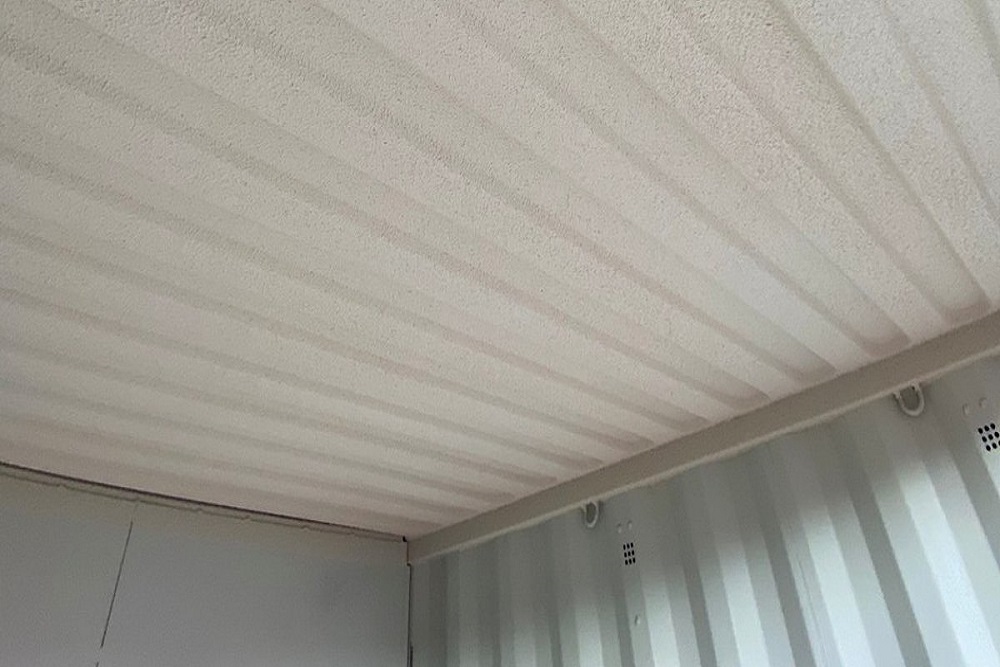Introduction
Shipping container condensation is a common issue face by businesses and individuals involve in the storage and transportation of goods. This problem can lead to significant damage to cargo, resulting in financial losses and delays in delivery. In this essential guide, we will explore the causes of shipping container condensation, outline the most effective methods for preventing and managing this issue, and provide practical solutions for protecting your cargo from moisture damage.
Understanding Shipping Container Condensation
Shipping container condensation occurs when the air inside the container becomes saturate with moisture, causing water droplets to form on the walls and ceiling. This is primarily due to temperature fluctuations within the container, which cause the air to cool and warm, leading to the formation of condensation.
There are several factors that contribute to shipping container condensation, including:
- Ambient humidity levels: High humidity levels can increase the amount of moisture in the air, making it more likely for condensation to form.
- Temperature fluctuations: Changes in temperature can cause the air inside the container to expand and contract, leading to condensation.
- Poor ventilation: Inadequate ventilation can result in a build-up of moisture within the container, increasing the risk of condensation.
- Cargo moisture content: Certain types of cargo, such as food products and textiles, can release moisture into the air, contributing to condensation.
The Importance Of Ventilation And Airflow
Proper ventilation is crucial in preventing shipping container condensation. Ventilation allows moisture-laden air to escape from the container, reducing the risk of condensation forming. There are several ways to improve container ventilation, including:
- Installing vents: Vents can be install on the container walls or roof, allowing air to circulate and moisture to escape.
- Using fans: Fans can help to circulate the air within the container, promoting airflow and reducing the risk of condensation.
- Creating space between cargo: Ensuring that there is adequate space between items store within the container can help to promote airflow and reduce the risk of condensation.
Insulating Your Shipping Container
Shipping container insulation can help to reduce temperature fluctuations within the container, minimizing the risk of condensation. There are several types of insulation materials available, including:
- Spray foam insulation: This type of insulation is apply directly to the container walls and ceiling, creating an airtight seal that helps to prevent condensation.
- Insulation panels: These panels can be install on the interior walls and ceiling of the container, providing an additional layer of insulation.
- Reflective insulation: This type of insulation consists of a reflective foil layer that helps to reduce heat transfer, minimizing temperature fluctuations within the container.

Using Desiccants For Moisture Control
Desiccants are materials that absorb moisture from the air, helping to maintain a dry environment within the shipping container. These products can be an effective solution for controlling shipping container condensation, particularly when use in conjunction with proper ventilation and insulation. Common types of desiccants include:
- Silica gel: This desiccant is available in various forms, such as sachets, beads, or canisters, and can be place throughout the container to absorb moisture.
- Calcium chloride: This desiccant is often use in shipping containers due to its high moisture-absorbing capacity and is typically available in hanging bags or canisters.
- Activate alumina: This desiccant is highly effective at absorbing moisture and can be use in both bulk and package forms.
Protecting Your Cargo From Condensation Damage
In addition to preventing and managing shipping container condensation, it’s essential to take steps to protect your cargo from moisture damage. Some effective strategies include:
- Using moisture-resistant packaging: Choose packaging materials that are resistant to moisture, such as plastic or foil-line containers, to protect your cargo from condensation.
- Sealing cargo: Ensure that your cargo is properly seal before loading it into the shipping container, to minimize the risk of moisture damage.
- Elevating cargo: Place your cargo on pallets or other raise platforms to keep it away from any potential condensation that may form on the container floor.
Shipping Container Storage Tips
Proper storage of your shipping container can also help to minimize the risk of condensation. Consider the following tips when storing your container:
- Choose a dry location: Store your container in an area with low humidity levels and good drainage to reduce the risk of moisture-relate issues.
- Ensure adequate ventilation: Make sure that your container is well-ventilate, both during storage and while in use.
- Regularly inspect the container: Regularly check your shipping container for signs of condensation and address any issues promptly to prevent damage to your cargo.
Conclusion
Shipping container condensation can be a significant issue, but with proper understanding, ventilation, insulation, and moisture control measures, it can be effectively managed. By implementing these strategies and taking steps to protect your cargo, you can minimize the risk of moisture damage and ensure the safe transportation and storage of your goods.





